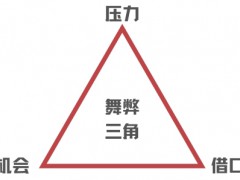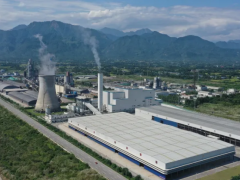• 尽管世界上最大的几家石油公司最近做出了净零钻井的承诺,但它们仍在加大钻井作业力度
• 伍德麦肯兹负责勘探作业的副总裁:石油巨头仍在进行原油勘探作业,当年对勘探的谈论比以前少得多
• 不管国际能源署(IEA)是否制定了净零钻井的路线图,今年全球都可能出现新钻井数量的上升
据美国油价网报道,IEA去年发布的在2050年前实现净零排放路线图,已成为时机不佳的教科书范例。 仅仅4个月以后,IEA表示,由于欧佩克的备用产能不断减少,全球在石油勘探方面需要更多的投资。
除了这些混杂的信号,IEA去年还抨击了欧佩克+,指责后者人为保持全球石油供应紧张,以维持高油价。根据英国《金融时报》的汤姆•威尔逊所说,乍看之下,人们可能认为,世界上最具影响力的能源机构并不真正知道自己在说什么。 然而,石油巨头并不关心这一点。 石油巨头正在悄悄地进行原油勘探作业, 他们只是不去谈论勘探一事。
伍德麦肯兹负责勘探作业的副总裁安德鲁•莱瑟姆日前向英国《金融时报》的威尔逊表示:“石油巨头仍在悄悄勘探原油,然而他们对原油勘探作业的表态远不如过去。你必须是一个真正专业的行业观察者,才能了解这些事情,(因为)石油巨头不会谈论这些事情。”
伍德麦肯兹称,去年全球共钻了798口评价井和勘探井,与一年前的钻井量大致相同。 这也大大低于2019年的1256口井的钻井量。但根据莱瑟姆的说法,这种下降与疫情有关。
这意味着,不管IEA是否制定了实现净零排放的路线图,今年的新钻井数量都可能增加,尤其是考虑到石油需求的强劲态势,IEA也承认,石油需求已经超出了市场观察人士的预期。
据报道,壳牌公司1月早些时候在纳米比亚发现了一个潜在的大型油藏。 并不是壳牌公司宣布了这一发现。 路透社援引不愿透露姓名的知情人士的话称,这个南非国家将于近期发表正式声明。
埃克森美孚公司继续在圭亚那近海获得石油发现。 1月早些时候公布的最新消息是,埃克森美孚公司计划开始从位于斯塔布鲁克区块的第二个平台生产石油,这将使圭亚那的石油产量增加3倍。 与此同时,这家美国超级石油公司还宣布了到2050年前成为一家净零排放公司的计划。
法国道达尔能源公司在新油井钻探方面尤其活跃,同时也在加速可再生能源业务的扩张。 英国《金融时报》援引的伍德麦肯兹数据显示,这家法国能源巨头去年钻取的新探井数量最多,排在第二名的埃克森美孚公司和第三名的挪威能源巨头Equinor之前。
对埃克森美孚公司来说,这基本上是正常的业务。 与壳牌公司不同的是,埃克森美孚公司有一些激进的股东在跟踪它,但没有法院裁决强迫它削减其石油产量。 也许正是这个事实使得壳牌公司案例特别有趣。 去年,这家超级巨头被荷兰一家法院下令在10年内削减45%的碳排放量。壳牌公司表示,其石油产量在2019年就已经达到顶峰。
然而,壳牌公司正在悄悄地进行钻探作业,它不仅仅是在进行钻探作业,而且是在一个没有发达基础设施或任何形式石油工业的边境地区进行钻探作业。 这意味着如果发现得到证实,届时将会有更多的投资。 那么,壳牌公司为什么要这么做?
储量替代是一个原因。 即使有计划——也有义务——在未来减少石油产量,壳牌公司也没有完全放弃其核心业务。 不管各种预测如何,石油需求看起来仍有几十年的增长空间。 新的风能和太阳能装置的成本正在上升,关键的矿产品和金属的供应是有限的,新的矿山的交付时间甚至比海上油井的交付时间还要长。 这对可再生能源革命来说不是好兆头,但对石油和天然气需求来说却是个好兆头。
另一个原因是油价。 随着油价的提高,新的未充分开发地区的钻井成本将变得更加低廉。 在布伦特原油价格为每桶91美元的情况下,勘探活动可能比布伦特原油价格为每桶40美元时更具吸引力,尤其是因为高油价强烈表明需求正超过供应。
由金融专家组成的气候风险定价组织“碳追踪者(CarbonTracker)”本月早些时候发布的一份报告警告说,新的油气勘探可能会导致价值5000亿美元的资产陷入困境,因为从长远来看,石油需求将会消失。 然而,碳追踪者去年曾预测,风能和太阳能发电的成本将继续下滑,而这一预测在报告发布一年后并没有真正实现,因此,这些资产是否真的会陷入困境仍是一个悬而未决的问题。
石油巨头——和中小型石油公司——正在做任何在当前环境下都会做的事情。 上述环境表明,对石油巨头产品的需求是强劲的。 当然,石油巨头会通过生产尽可能多的产品来满足这种容易强劲的需求。 但他们不会像以前那样公开谈论这个问题。 相反,他们会重点投资风能、太阳能和电动汽车,同时悄悄地钻探原油以确保明天和后天市场有足够的原油供应。
李峻 编译自 美国油价网
原文如下:
Big Oil Is Quietly Exploring For More Crude
· The world’s largest oil companies are ramping up drilling operations despite recent net-zero pledges
· WoodMac VP for exploration: The majors are still exploring and say much less about it than they used to
· With or without the IEA’s roadmap to net zero, this year could see an uptick in new drilling
The International Energy Agency’s Net Zero by 2050 roadmap, issued last year, has become something of a textbook example of bad timing. Just four months later, the agency said the world needs more investment in oil exploration because of dwindling OPEC spare production capacity.
Besides these mixed signals, the agency also lashed out at OPEC+ last year, accusing it of keeping the global oil supply artificially tight to keep prices high. At first glance, one might think the world’s most influential energy body, per the FT’s Tom Wilson, does not really know what it’s talking about. Yet Big Oil does not care about that. Big Oil is drilling. It’s just not talking about it.
“The majors are still exploring and say much less about it than they used to,” Andrew Latham, vice-president for exploration at Wood Mackenzie, told the FT’s Wilson this month. “You have to be a real specialist sector watcher to know these kinds of things [because] they don’t talk about it.”
According to the consultancy, a total of 798 appraisal and exploration wells were drilled last year, which was about the same as was drilled a year earlier. It was also substantially less than what was drilled in 2019, at 1,256 wells, but the drop was, according to Latham, connected to the pandemic.
This means that, with or without the IEA’s roadmap to net zero, this year could see an uptick in new drilling, especially given the strength of oil demand, as admitted by that very same IEA to have exceeded market observers’ expectations.
Shell struck a potentially major deposit in Namibia earlier his month, according to reports. It wasn’t the company that announced the find. It was Reuters, citing unnamed sources in the know who said the government of the southern African country would make an official announcement this week.
Exxon continues to make find after find offshore Guyana. The latest update came earlier this month and was about plans to start pumping from a second platform in the Stabroek Block, which would boost the country’s oil output three times. Meanwhile, the supermajor has also announced plans to become a net-zero company by 2050.
French TotalEnergies, formerly just Total, has been particularly active in new oil well drilling, even as it also ramps up renewable energy expansion. The French company drilled the most new exploration wells last year, according to Wood Mac data cited by the Financial Times, coming ahead of both Exxon, which was second, and Norway’s Equinor, which came in third.
For Exxon, it is mostly business as usual. The company has some activist shareholders on its tail but no court rulings obliging it to shrink its oil output, unlike Shell. It is perhaps this fact that makes the Shell case especially interesting. The supermajor was ordered by a Dutch court to slash its emissions footprint by 45 percent within ten years last year, and it said that its production had peaked anyway back in 2019.
Yet Shell is drilling—and not just drilling but doing it in a frontier region with no well-developed infrastructure or oil industry of any sort. This means higher investments should the find be /confirm/ied. Why is Shell doing this?
Reserve replacement is one reason. Even with plans—and an obligation—to produce less oil in the future, the company is not completely giving up its core business. Oil demand, regardless of various forecasts, looks like it still has a few good decades in it. The costs of new wind and solar installations are rising, the supply of critical minerals and metals is limited, and new mine lead times are even longer than the lead times for offshore oil wells. This doesn’t bode well for the renewable revolution, but it does bode well for oil and gas demand.
Another reason is oil prices. With these higher, drilling in new underexplored regions becomes more affordable. With Brent crude at $91 per barrel, exploration is a lot more attractive than it probably was with Brent at $40, not least because high oil prices strongly suggest demand is exceeding supply.
Carbon Tracker earlier this month published a report warning that new oil and gas exploration could result in stranded assets worth $500 billion because over the long term, oil demand would perish. Yet the same organization last year forecast a continued slump in the costs of wind and solar power, and that did not exactly play out, just a year after the report, so whether or not these assets will indeed be stranded remains a wide open question.
Big Oil—and small and medium oil, too—is doing what any business would do in the current environment. Said environment suggests that the demand for Big Oil’s products is strong. Naturally, they would try to respond to that strong demand by producing as much as they can to satisfy it. But they won’t talk about it as openly as they used to before. Instead, they would highlight their investments in wind, solar, and EVs while quietly drilling to ensure there will be enough oil for tomorrow and the day after.
免责声明:本网转载自其它媒体的文章,目的在于弘扬石化精神,传递更多石化信息,并不代表本网赞同其观点和对其真实性负责,在此我们谨向原作者和原媒体致以敬意。如果您认为本站文章侵犯了您的版权,请与我们联系,我们将第一时间删除。







